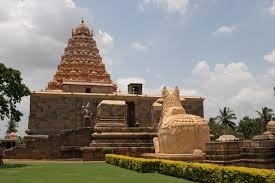Discovering Gangai Konda Cholapuram: A Testament to Chola Grandeur

Introduction
Gangai Konda Cholapuram, located in the Ariyalur district of Tamil Nadu, is a UNESCO World Heritage Site renowned for its historical significance and architectural splendor. Founded during the reign of the Chola dynasty, it serves as a vital link in understanding the cultural and political prowess of one of India’s greatest empires. The town remains a crucial site for historians, archaeologists, and tourists, representing the Chola’s advancements in architecture, art, and urban planning.
Historical Background
Established in the early 11th century by Rajendra Chola I, Gangai Konda Cholapuram was constructed to celebrate the Chola Empire’s victory over the kingdoms of South Asia. The city served as the capital for a brief period and is home to the grand Brihadisvara Temple, a significant architectural masterpiece. This temple showcases the Chola’s extraordinary craftsmanship, featuring intricately carved sculptures and massive gopurams (gateway towers).
Architectural Significance
The Brihadisvara Temple is the centerpiece of Gangai Konda Cholapuram, adhering to the Dravidian style of architecture. This sacred site, dedicated to Lord Shiva, symbolizes the religious fervor of the time and the socio-political influence of the Chola kings. The temple complex is adorned with detailed stone carvings depicting various deities and mythological scenes, reflecting the Chola’s artistic achievements. The temple’s vimana (tower) is one of the tallest of its kind and is an excellent example of the engineering capabilities of ancient India.
Current Events and Preservation Efforts
Recently, efforts to preserve and promote awareness about Gangai Konda Cholapuram have garnered attention. The Archaeological Survey of India (ASI) is actively involved in conservation activities, ensuring that this invaluable heritage site is maintained for future generations. Local tourism initiatives have also been launched to promote the cultural heritage of the area, providing jobs and educational opportunities for residents.
Conclusion
Gangai Konda Cholapuram is not just a relic of the past but a living testament to the grandeur of the Chola dynasty. Its historical and architectural significance continues to draw researchers, historians, and tourists alike, making it a crucial part of India’s rich heritage. As preservation efforts continue, it is essential for the modern world to recognize the importance of safeguarding such sites, which offer invaluable insights into our history. The continued exploration and appreciation of Gangai Konda Cholapuram will contribute to the understanding and respect for India’s diverse cultural past.









